As of April 1, Making Stories is closed. Thank you for your support all these years!
As of April 1, Making Stories is closed. Thank you for your support all these years!
Spinning Fiber
Notions & Gifts
Books, Magazines & Patterns
About Us
We're here to help you stitch sustainability into every aspect of your making.
With our carefully curated selection of non-superwash, plastic-free yarns and notions, we have everything you need to get started on your next project - and the one after that.
Here's to a wardrobe of knits we love and want to wear for years to come!
We're here to help you stitch sustainability into every aspect of your making.
With our carefully curated selection of non-superwash, plastic-free yarns and notions, we have everything you need to get started on your next project - and the one after that.
Here's to a wardrobe of knits we love and want to wear for years to come!
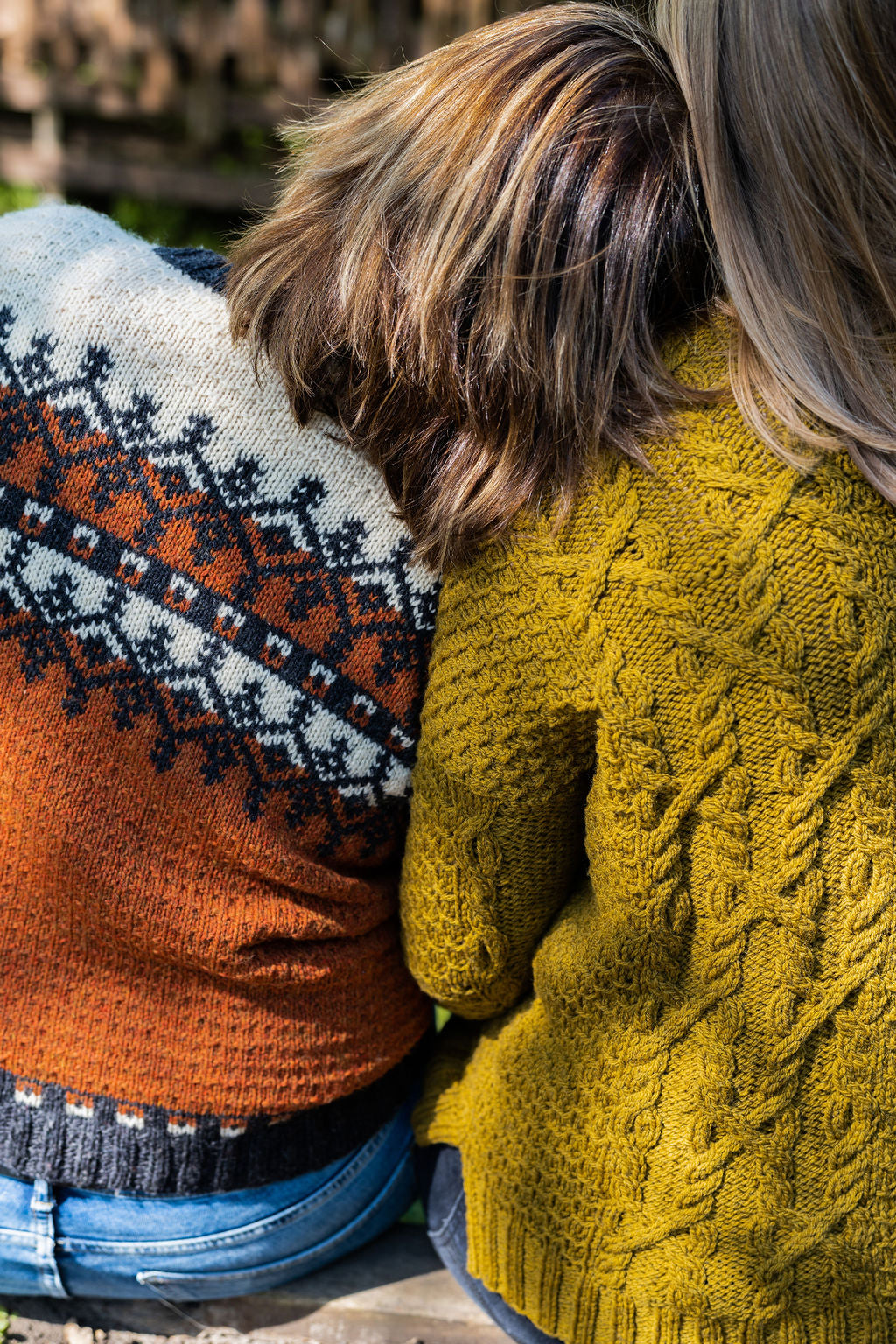
Our Sustainability Pledge

Our Blog
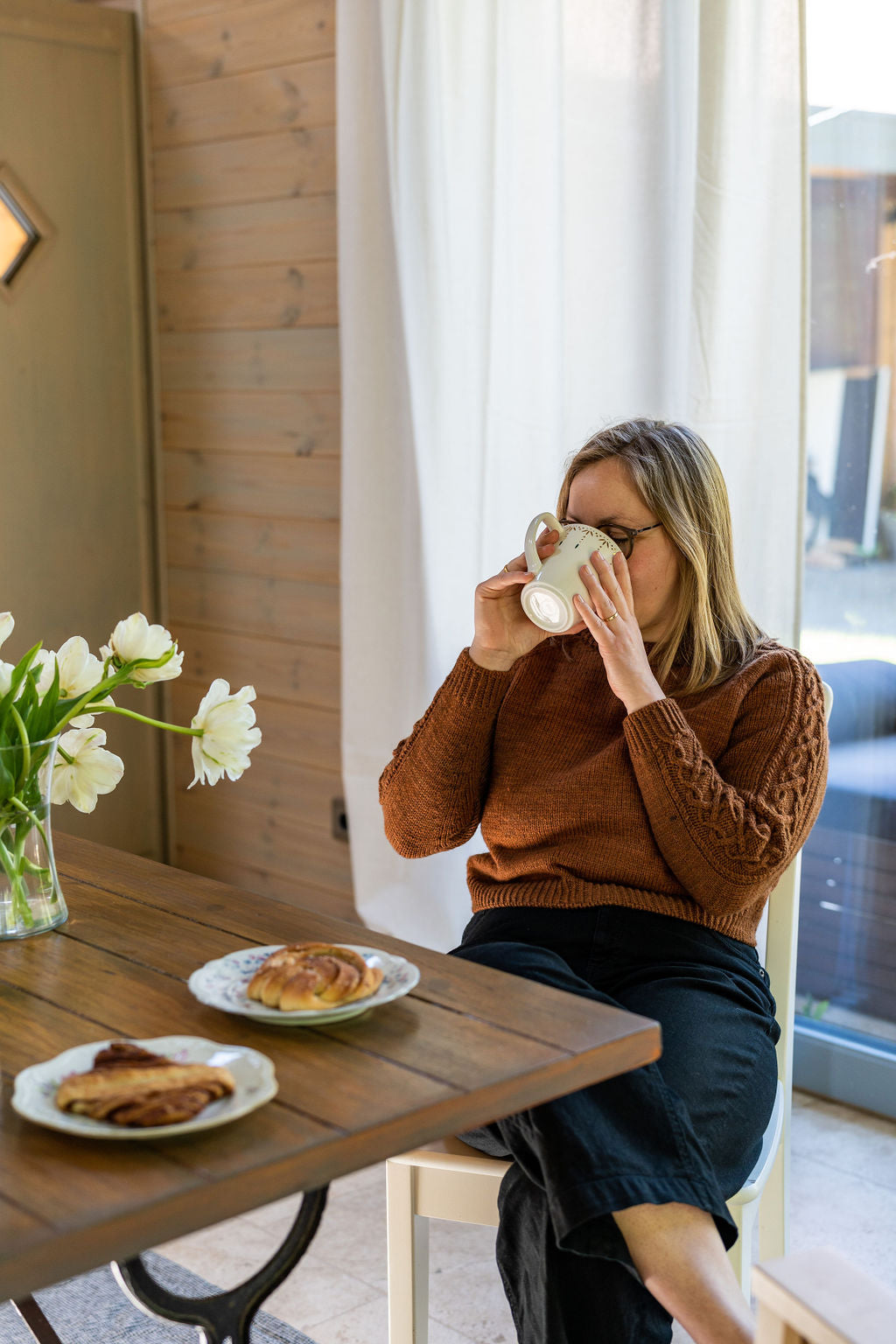
Our Podcast
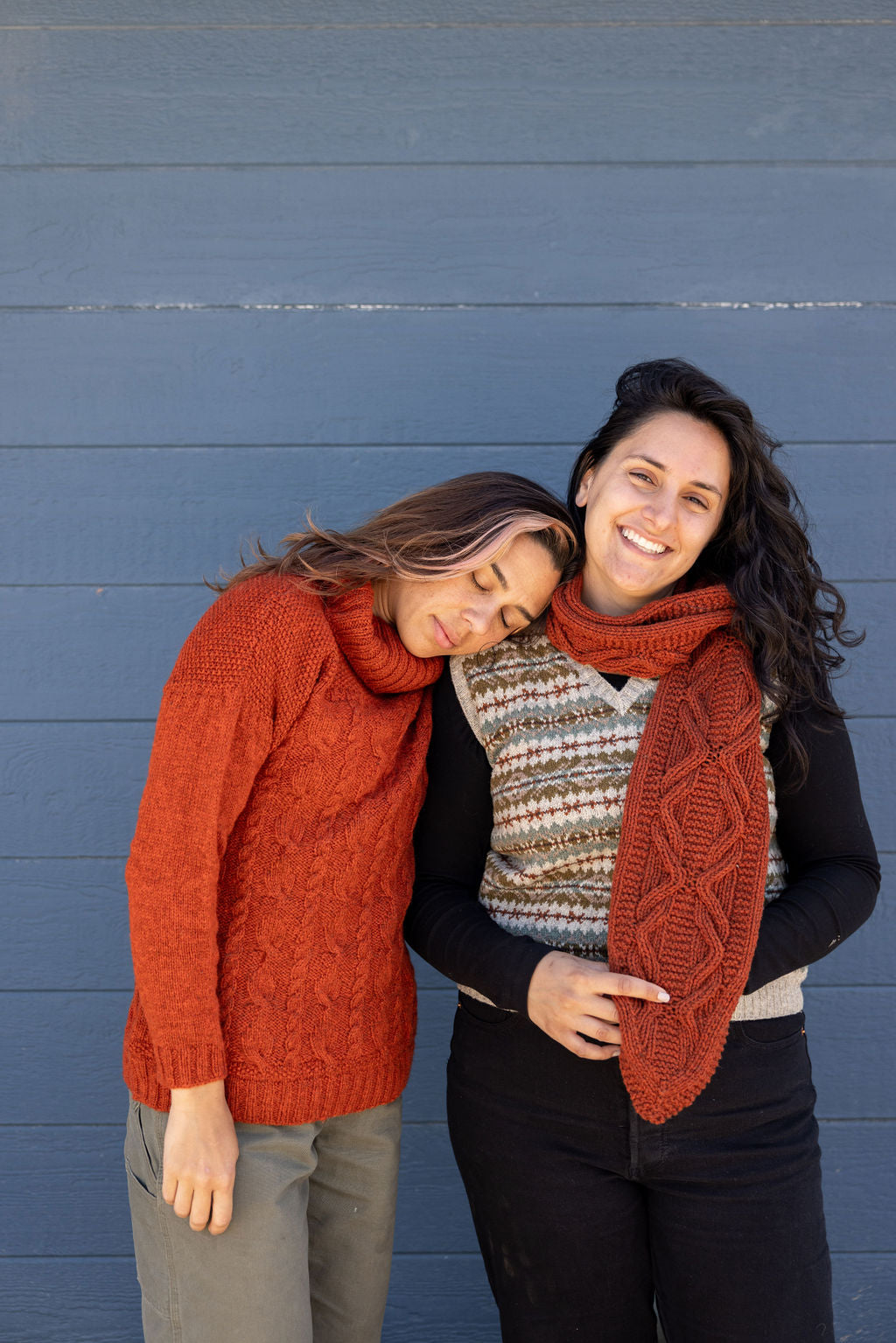
The Making Stories Collective
Thoughts on closing down a knitting magazine
November 19, 2024 12 min read 1 Comment
As a lot of you might have suspected I have, at last, made the decision to definitely close down Making Stories Magazine after Issue 14, our 2025 Fall & Winter issue. This means we still have two issues to go - Issue 13, coming out in March (Confetti & Rainbows!!), and Issue 14, coming out in September. I wanted to share this decision with you bright and early as I don’t feel like holding this in when we publish our last Spring and then our very last Fall & Winter issue. I want to celebrate those issues, and the work that we have done over the last eight years, and I want to be able to share the bittersweet feelings that will inevitably come up when the list of “lasts” still do be done gets shorter and shorter.
If this decision comes as a surprise to you, I would nudge you to head over to this blog post, where I shared my thoughts on the current state of the knitting magazine market, and what it means for indie magazines. It’s a few months old at this point, but still very relevant.
For now, I would love to share a few thoughts about closing down Making Stories Magazine. Think of this post as an extension to this one, with some more thoughts on the pattern market in particular.
I have been working in the knitting market for over eight years now, coming to it after starting my professional life in a big consulting firm, and then moving on to a management position in a 50-people-online-business. The decision to start a business in the knitting world was not a super conscious one - it emerged over the course of 2016, the year I had planned to take off to figure out what I wanted to do with my life. Instead, I ended up freelancing for startups for most of the year, gradually realising that this was definitely not what I wanted to do, and turning more and more towards knitting and the online knitting community I had found on Instagram.
Between the fall of 2016 and the fall of 2019, I started a handful of different businesses, and as businesses go, they changed and evolved over those three years. I worked as a business coach for small creative businesses, a freelance writer for bigger firms active in the knitting space, I sewed project bags and sold them on Etsy and then my own website, I dabbled in knitwear design, I started a video podcast and a Patreon, and I started Making Stories, together with my then-co-founder Verena. I am probably forgetting half of the iterations of these businesses - the gist is, these were years of trying lots of different things, becoming even deeper involved in the knitting world, and learning on the job.
In September of 2019, I gave birth to our child, Aurin, and took three months off. Over those three months, I realised that I did not want to run all of those businesses anymore. It felt too much for the stage of my life I was in, and out of the three core ones, only one made me truly happy: Making Stories. I closed down my project bag business and offboarded all my coaching clients over the first half of 2020, and have been focusing on Making Stories exclusively every since.
At that time, Making Stories was still only a publisher. We had made the pivot from books to the magazine in 2018, publishing our first-ever Making Stories Magazine issue in the spring of 2019. When it launched, during Edinburgh Yarn Fest 2019, I was running around the festival with a cute baby bump and copies to hand out, extremely nervous whether anyone would buy another knitting magazine. I was also feeling the tension between my co-founder Verena and I - Making Stories had different places in our lives, and this became even more obvious over the next year as we both became mothers for the first time. When it became clear that I wanted Making Stories to be my full-time job and Verena wanted to move out of self-employment, we parted ways amicably with me buying her out.
This opened up the space for me to pursue a lifelong dream in 2021: Slowly, gradually, adding yarns to our portfolio, moving us from a publisher to an online shop, with the goal of becoming your one stop shop for all things sustainability in knitting. I am so glad that I followed this hunch - if I hadn’t, Making Stories would cease to exist with shutting down the magazine.
Over the years that followed, 2021 through 2024, the yarn and notions selection grew, both in terms of financial importance as well as how much of my time it took up. Where my work had been very cyclical, following the publication schedule, it became constant, with me needing to figure out how to actually sell yarns continuously instead of focusing on two launches per year. Despite, or perhaps because of me needing to learn so many new things, this was a really happy time: I loved experimenting with different things, trying out new yarns, figuring out what would work well in the shop, setting up our website completely differently. I added the Sustainable Sock Club (then titled Sock Box Subscription), and exhibited on a few different yarn festivals.
The entire time, I continued to publish the magazine twice a year. And without fail, I would look at our bank account when the time to pay the printing invoice came, and when we were due to pay our designers, and cringe: It was doable, most of the time, but my gut was telling me that something was fundamentally off with the numbers behind the magazine - and it was getting worse.
After starting a business accounting system called Profit First, where you transfer money you made with different products to different bank accounts that you draw from when it’s time to reorder those products, it became even more obvious: The magazine was not making what I needed it to make in order to finance itself. We were subsidising the magazine through the yarn and notion sales, which had made it easy for me to ignore the financial issues of it.
Now, for some businesses, this would be a completely viable option, cross-financing a publication through sales of other products. It’s how big yarn companies are able to put out their pattern booklets - they finance them through the margin they have on yarn sales. Usually, those companies have a bigger margin on their yarns than we do, both because they are the producers and because they are large enough to benefit from what is called “economies of scale”, i.e. cost per skein getting lower and lower the more yarn you order.
As I realised that we were subsidising the magazine, I developed an even stronger feeling that we wouldn’t be able to sustain this for much longer. It was around the same time that the knitting magazine market completely flipped, almost overnight. First Laine sold their business to one of the largest Finnish publishers, then Amirisu announced a pivot to books, and shortly after to an online-only format, and then the earthquake: PomPom magazine shutting down, seemingly out of nowhere.
I had to face the writing on the wall: The knitting magazine market had a structural problem. I had been feeling this for years, but I didn’t want to see it, no matter what the numbers had been telling me. What had started out in 2017 as a super strong desire in the knitting market for high-quality publications had dwindled away to almost nothing in 2024.
When I ran the numbers to determine which print run we should do for Issue 12, it became glaringly obvious: Our wholesale sales had been steadily going down since Issue 8, and both our end customer sales and our magazine subscriptions had not been growing at all, meaning that we were only able to add as many new subscribers as we needed to offset the number of subscribers who cancelled. What I was seeing in the overall knitting magazine market was also present in our own numbers.
Now, I could have made the decision to pivot, say, to a digital format, or to try and somehow save the magazine. The thing is: I have done this multiple times in the past, the last time when we were working on Issue 9 with adding advertising to the magazine. I had started the Making Stories Collective originally to help take the pressure off the magazine sales needing to provide a salary for me, and it felt as if I had been trying for years to make something work that just fundamentally wouldn’t.
I had to face it: The market for knitting magazines had changed so dramatically that we didn’t have a place in it anymore. It was amazing while it lasted - I truly love print, and I adore everything that the different publishers out there did, from the wildly imaginative patterns of PomPom to the serene, calm designs in Laine and the unique style of Amirisu. But: There are too many structural problems with this market for it to be viable for indie publishers.
I have been thinking a lot about why and how the knitting magazine market changed, and now felt like a good time to share some of these thoughts.
Over-saturation
When we first started out with Making Stories at the end of 2016, we saw a need for pattern books combining sustainably created yarns with modern, wearable knitwear designs. Back then, there were a couple of knitting magazines, but the market felt wide open, with more than enough space for more publications.
Over the course of the years since, especially between 2018 and 2023, the amount of knitting publications in the market, especially beautiful, high-quality books, increased dramatically. At the same time, international knitting magazines were becoming more readily available, with a few new ones entering the scene as well.
Things that made us stand out in the beginning - beautiful, recycled paper, a focus on high-quality photography - were not unique anymore. For a few years, it felt like every month, 4 to 5 amazing new knitting books were being published, competing for space on the shelves and in our customers’ carts.
As much as I adore printed knitting books, I started feeling as if it was too much. As a customer, investing in one, two high-quality, expensive books per year felt okay, and possibly having one subscription to a magazine, but with the market becoming crowded with different magazines and the shop shelves showcasing more and more, newer and newer titles every month, it just felt like too much.
This feeling can easily lead to customers not buying anything at all - after all, how to decide between all the gorgeous things on offer? - and to the overall market cooling down. The perceived value of each book or issue can go down if you push a lot of them in the market - after all, they’re not as unique anymore.
In addition to this over-saturation, we’ve seen a significant shift in available income over the past couple of years:
Inflation
Especially in Europe, the US, Canada, UK - our main markets - the prices for everything, from rent to gas to groceries, have gone up dramatically in the past two to three years. This has led to significant changes in shopping behavior - very understandably so! If you can only get a fraction of what you used to get in the supermarket for the same price, you need to shift your priorities when it comes to spending money.
When I look at the supplies that you need to knit, there’s a hierarchy to me:
- Yarn & needles
- Pattern
- Publications
(I’m honestly not sure where notions fit into this - other than needles, you can usually make do with a scrap of yarn for stitch markers or yarn holders, and a tote bag can also do double duty as a project bag. That being said, I know a lot of you love beautiful notions! For the sake of the argument, I’ll leave them out of the hierarchy.)
Which leaves us with: You definitely need yarn and needles to knit. No yarn + no needles = no project.
You most likely want a pattern to knit from unless you are a really experienced knitter or knitwear designer or super adventurous. The pattern can be something you already own, something you get free on the internet, or an individual PDF you pay more.
Now, do you really need a publication to knit something? No. No, you don’t. They are beautiful, and they hopefully provide you with more than one pattern you’d like to knit, but are they absolutely necessary for you to knit something you like? Nope.
And this has a direct impact on publishers in times of inflation: If you are prioritising where to spend your money, chances are, you’re going to spend it on the things you absolutely need to knit: Yarn, needles, possibly a pattern. Publications are a nice-to-have, and this shows in sales all across the board.
Willingness to pay
Willingness to pay for me is different than inflation. Inflation has an impact on your ability to pay - your willingness to pay comes into play when you do have the money and you are considering whether and how much money to spend on something.
Now, for as long as I can remember, we’ve had pattern pricing discussions in the knitting world. I’m not going to rehash them in detail here – chances are, you have come across someone talking about this online – but I will give you the brief gist: Over the course of the almost 20 years since Ravelry started, pattern prices for PDFs have mostly stayed constant. At the same time, the level of professionalism expected from knitwear patterns has increased tremendously: We now expect a standard pattern to be graded size-inclusively, tech edited, test knit, beautifully layouted, with multiple samples in different sizes being photographed on various bodies by a professional photographer or at least to the same quality. Ideally, there are also custom-made video or photo tutorials for the techniques used in the pattern, and everyone involved in the creation of the pattern should be compensated fairly. I’m pretty sure I have not even listed all of the things necessary for a pattern right now.
Now, don’t get me wrong: I think all of these things are amazing and important! I love how many more size-inclusive patterns we have now compared to eight years ago, and fair compensation should be a given.
Here’s where the logic breaks, though: All of these things cost money. Some of them a lot. And if they don’t cost money in the sense of the designer paying someone else to do them, they cost money in terms of time the designer invests in them, which should also be compensated fairly. If the pattern prices stay constant though, as they have, the margin per pattern which you get as a designer decreases tremendously the more of these now expected things you offer in your pattern. And the margin is what ultimately amounts to the fair compensation for the designer.
All of which leads to a situation where knitwear design, now more than ever, is just not a viable business unless one of two things are happening:
- a) You’re in a privileged position to do this as a side hustle, not expecting to make money with it, and / or willing / able to spend your private money on your designs.
- b) You sell an incredibly high amount of patterns - volume making up for the incredibly low margin per pattern.
What’s the solution? Either reducing the level of professionalism in your patterns, thereby reducing the cost, but potentially harming your potential sales - or pricing your patterns higher. Now, I personally believe that the first is not actually an option anymore. We have opened Pandora’s box, and we can’t put those expectations back in. But as long as we’re not willing to pay an appropriate price for the work that is put into a pattern, knitwear design will always be a losing game.
Why has the pricing or willingness to pay not changed? I honestly have no idea. I do believe that so many knitters understand this problem, yet perhaps the perceived ability to pay (see inflation) is so low that it prevents the market from increasing the prices out of fear for losing their complete sales. But: If you don’t make money with your patterns, you do not have a business. You have a hobby, and it’s called knitwear design.
How does this impact publishers? In at least two different ways: Firstly, the same, possibly even higher, level of professionalism is expected from us in our magazines, significantly impacting our project budgets (printing, for example, is only about 30% of our overall magazine cost). Secondly, the price of pattern determines how much customers are willing to pay for a magazine. Often, you divide the price of the magazine by the number of patterns you are likely to knit from it, and compare that to what you’d pay for an average pattern on Ravelry to determine if it makes sense for you to buy the magazine. The thing is, one of those variables, i.e. the pattern price on Ravelry, is fundamentally too low, resulting in price expectations for the magazine to be too low as well.
All of this has led to the point where we are today. All of this, and: My own inability as a business owner to see the writing on the wall and take the necessary steps earlier. I struggle with this more often than I care to admit: How much of this is my fault? There’s no answer to this, or at least none that I will know at any point in time.
Have I tried my best? I think so. It makes me so happy to know that we’ve reached so many knitters with our pages over the years, and I know that quite a few of you will be really sad to see the magazine go - which, as much as I don’t want to make you sad, also shows me that we were so cherished, and that is something I am immensely grateful for.
Closing down the magazine does not mean the Making Stories story is over, though! We continue to serve you as an online shop filled with the best (I am biased, yes) selection of sustainably produced yarns and notions, and through providing you with sustainable yarn-y and fiber-y subscription boxes. I am so looking forward to growing the Sustainable Sock Club and Nature’s Stories Fiber Club over the next year, and I can’t wait to take you with me on this journey.
Thank you, from the bottom of my heart, for being with us, here. I can’t wait to share the last two issues of Making Stories Magazine with you and celebrate all that we’ve done!
PS: If you are a subscriber to the magazine, your subscription will automatically end after Issue 14 - no need to do anything!
1 Response
Leave a comment
Comments will be approved before showing up.
Also in Blog

Issue 13 – Confetti & Rainbows | Official Pattern Preview
February 12, 2025 13 min read
Hi lovelies! The sun is out here in Berlin, and what better day to talk about one of the most joyful issues we've ever done than a brilliant sunny winter day – meet Issue 13, Confetti & Rainbows!
In Issue 13 – our Spring 2025 Issue – we want to play! Confetti and rainbows, unusually and unconventionally interpreted in 12 new knitwear designs – a journey through color, shapes, texture and materials.
Confetti made out of dried flowers, collected over months from bouquets and the road side. Sparkly rainbows, light reflecting. Gentle textures and shapes, echoing the different forms confetti can take. An unexpected rainbow around the corner, on a brick wall, painted in broad strokes.
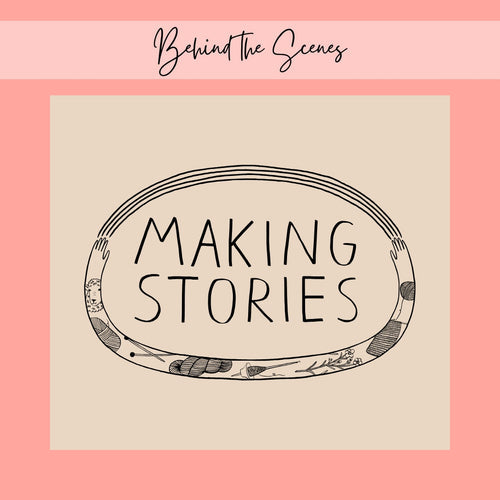
New Look, Same Heart: The Story Behind Our Delightful Rebrand
January 16, 2025 4 min read 1 Comment
Hi lovelies! I am back today with a wonderful behind-the-scenes interview with Caroline Frett, a super talented illustrator from Berlin, who is the heart and and hands behind the new look we've been sporting for a little while.
Caro also has a shop for her delightfully cheeky and (sometimes brutally) honest T-Shirts, postcards, and mugs. (I am particularly fond of this T-Shirt and this postcard!)
I am so excited Caro agreed to an interview to share her thoughts and work process, and what she especially loves about our rebrand!
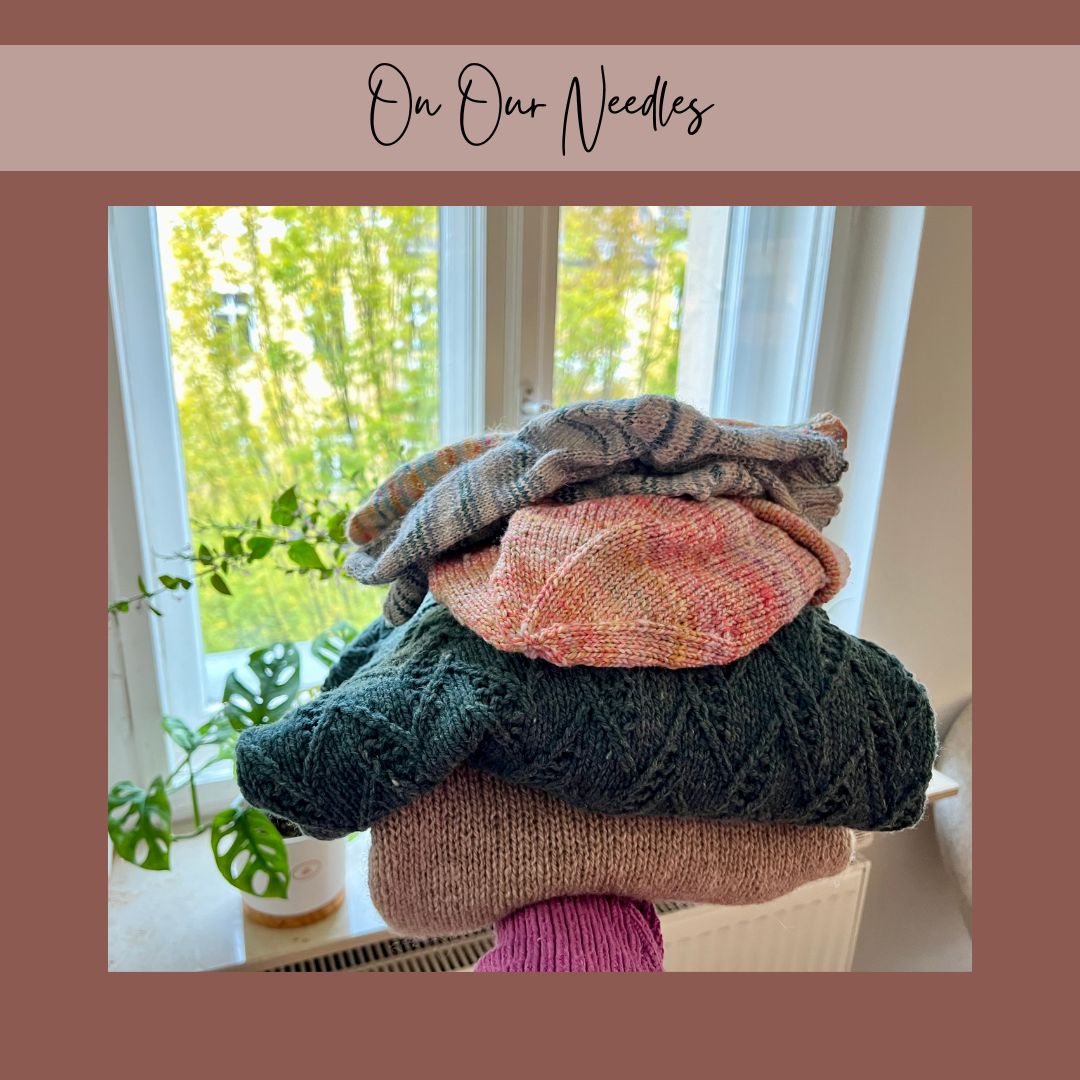
All the knits I finished while recovering from surgery
October 28, 2024 8 min read
About three weeks ago, I had surgery. Nothing major, and it was planned - but it was my first time undergoing general anaesthesia and facing an uncertain recovery period, both of which made me quite nervous. I knew that I was going to be in the hospital for two days, if everything went well, but then it was between one and three weeks of recovering at home, depending on how fast my body was going to heal.
Needless to say, I packed knitting for the hospital, but I didn’t feel like picking up my needles until my second day in the hospital. And then I knit. I knit, and knit, and knit. Curiously enough, I always get the urge to clear off my needles this time of the year - something about the weather changing, sweater season approaching, maybe? And this year, this urge coincided with me wanting to do something while watching copious amounts of Netflix without having to think very hard about what I was going to knit. Win win!
Who Is Making Stories?
We're a delightfully tiny team dedicated to all things sustainability in knitting. With our online shop filled with responsibly produced yarns, notions and patterns we're here to help you create a wardrobe filled with knits you'll love and wear for years to come.
Are you part of the flock yet?
Sign up to our weekly newsletter to get the latest yarn news and pattern inspiration!

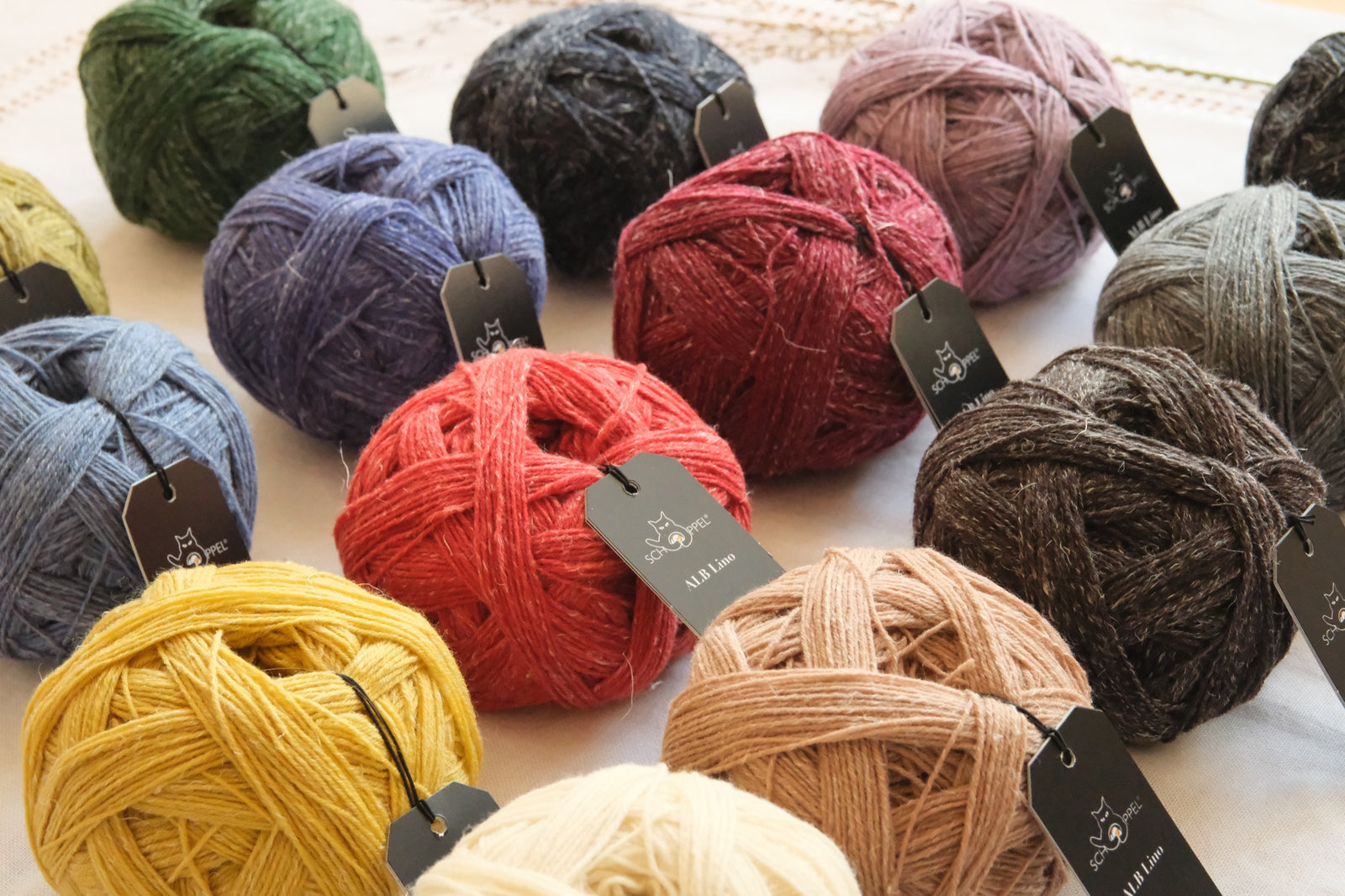
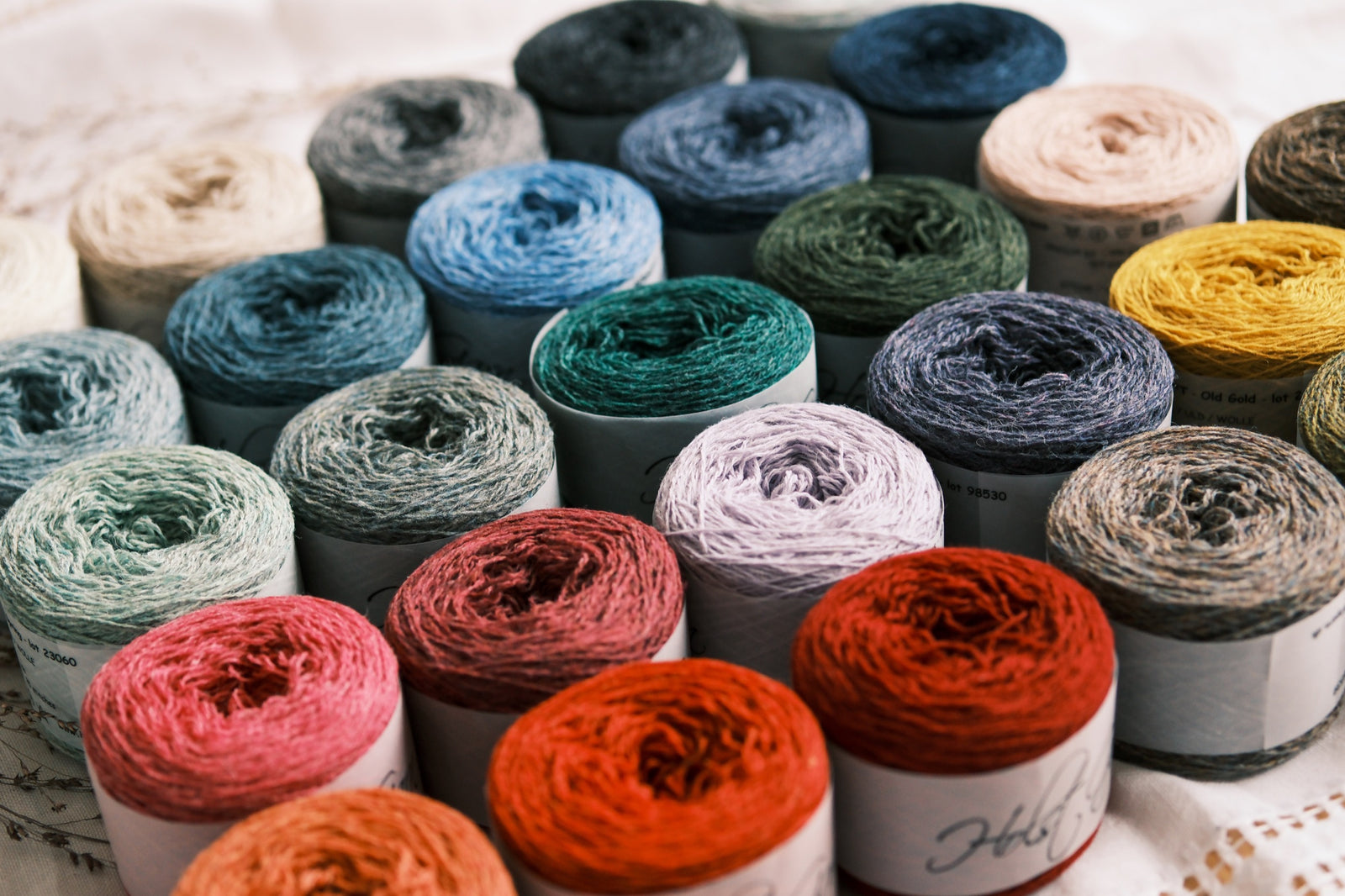
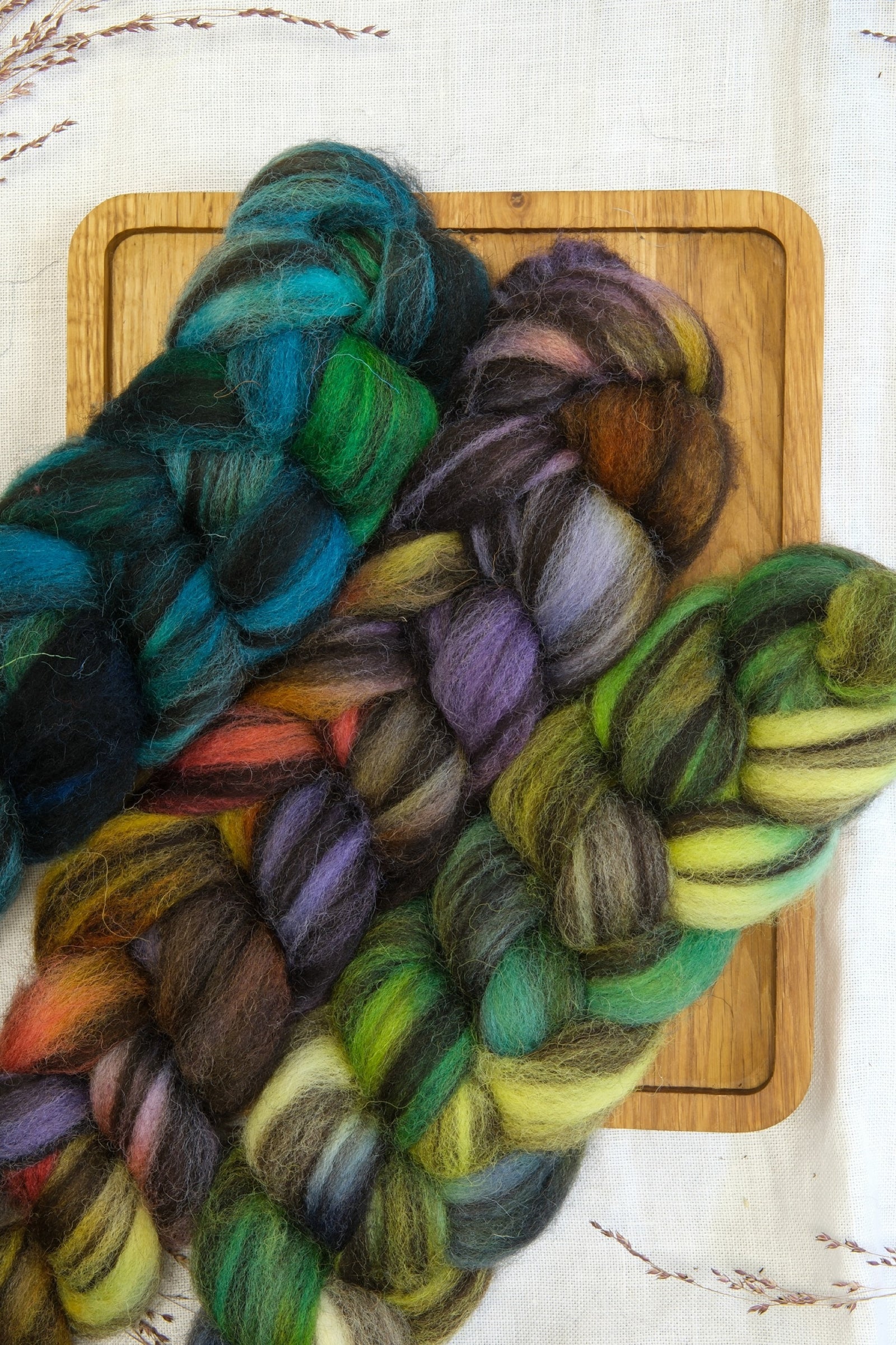
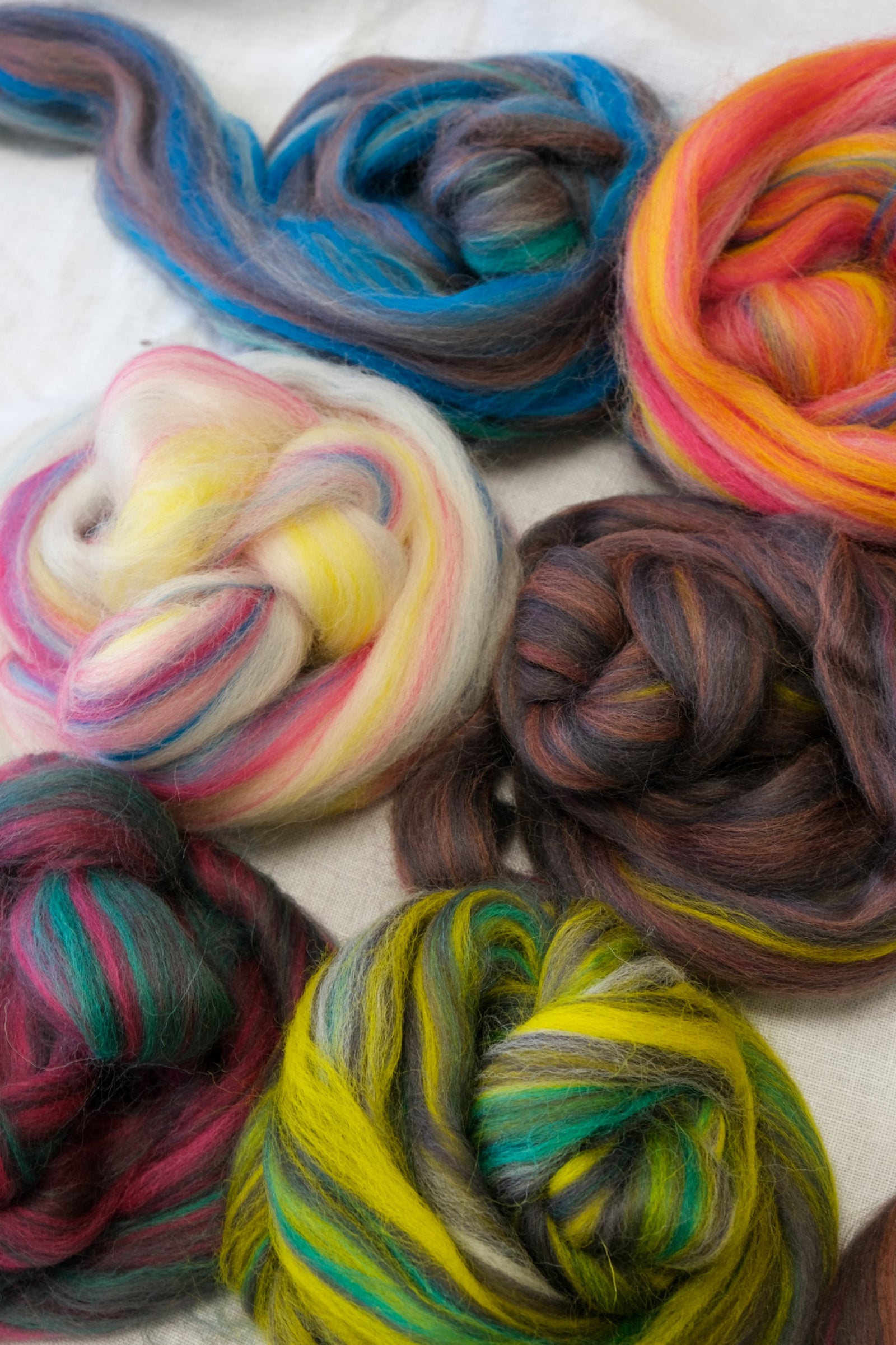
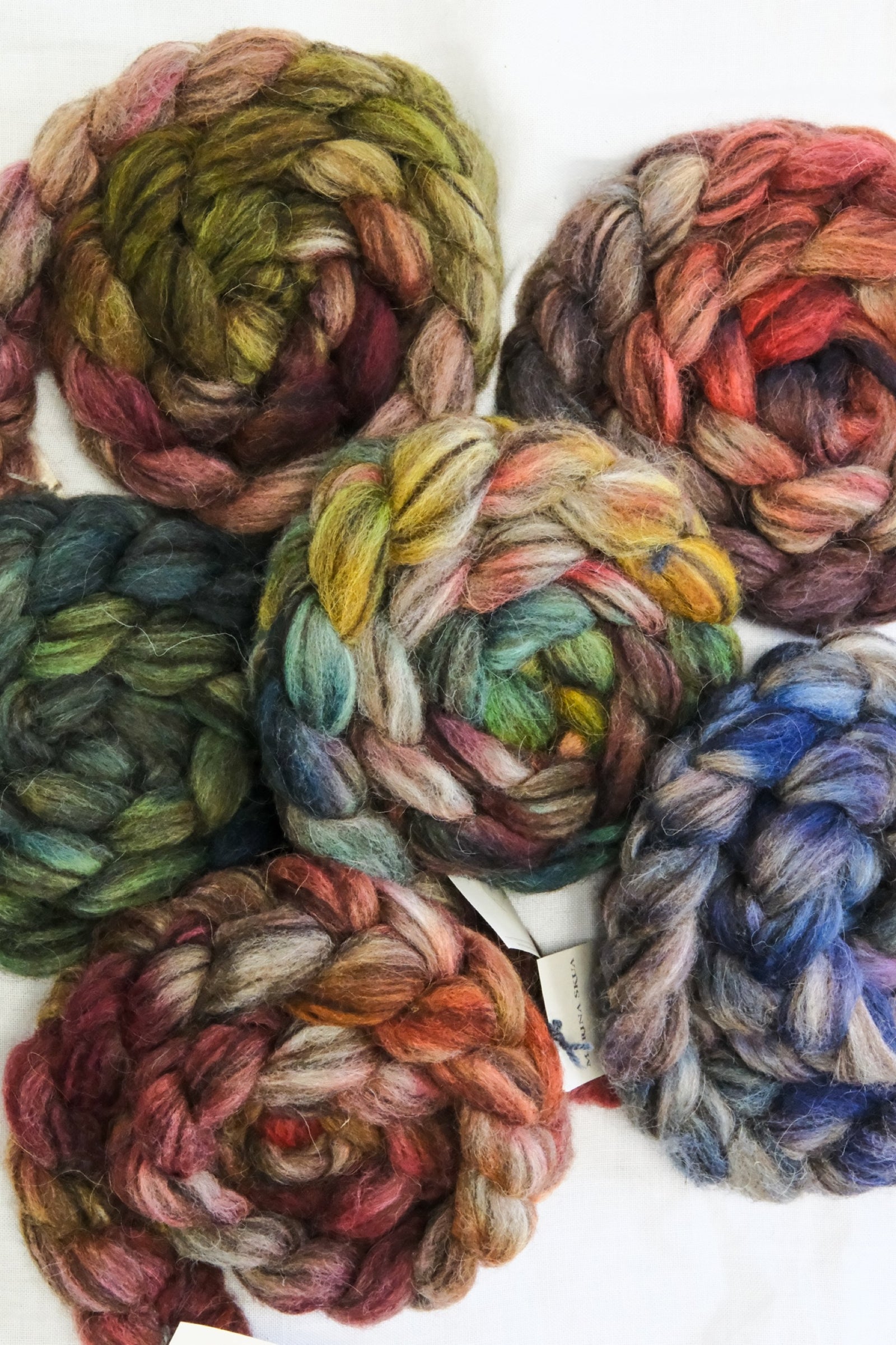
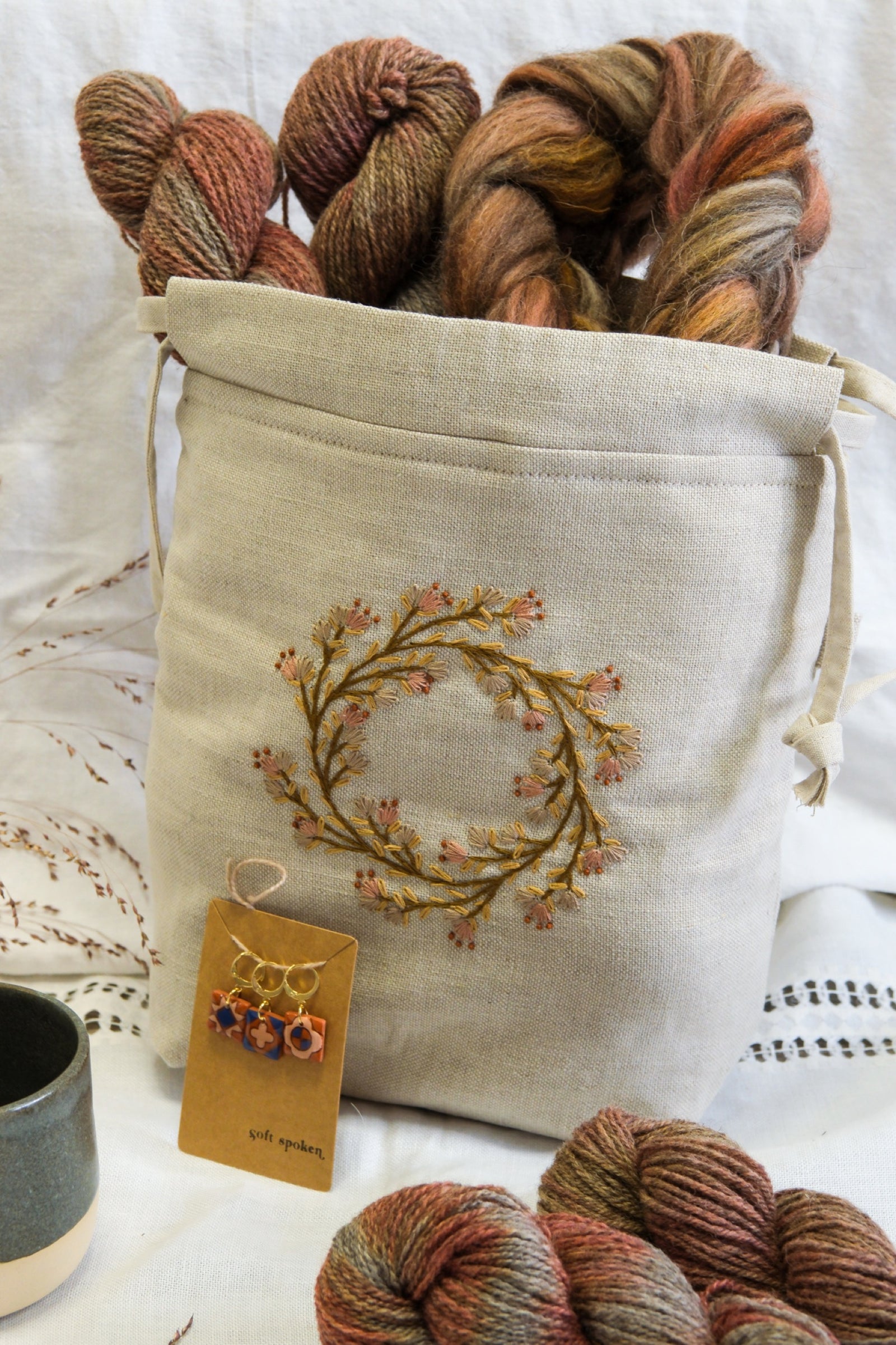
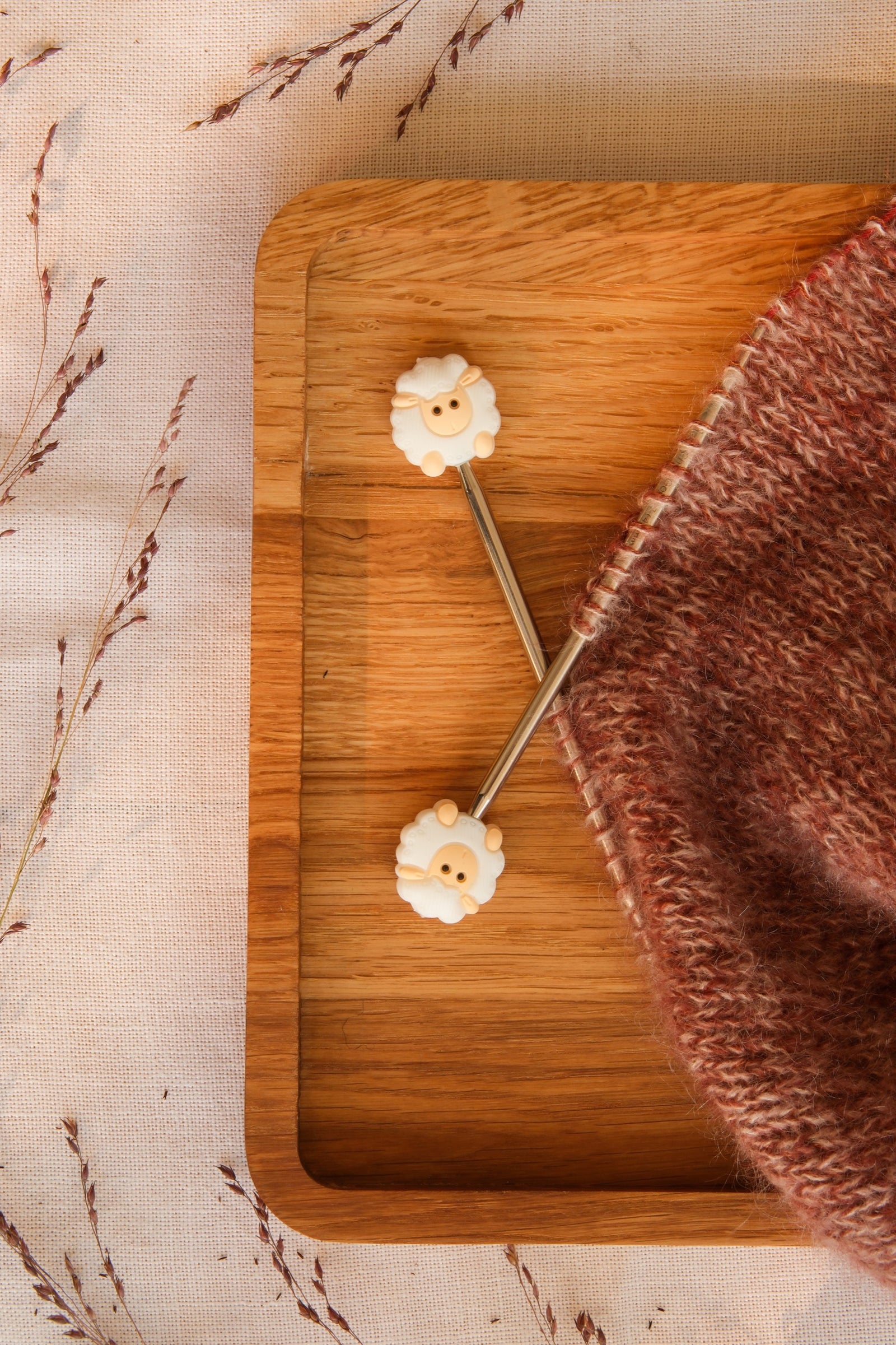
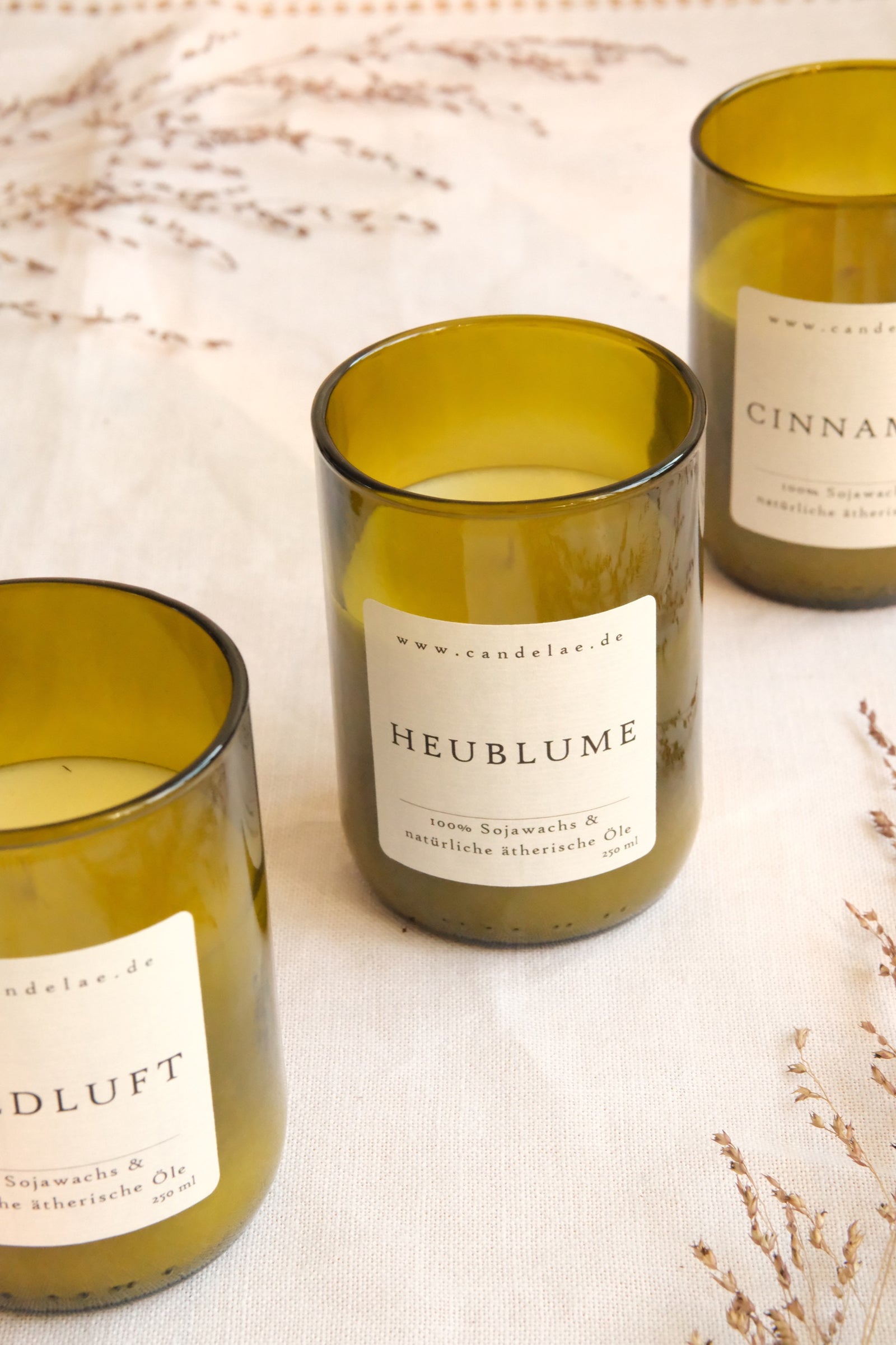
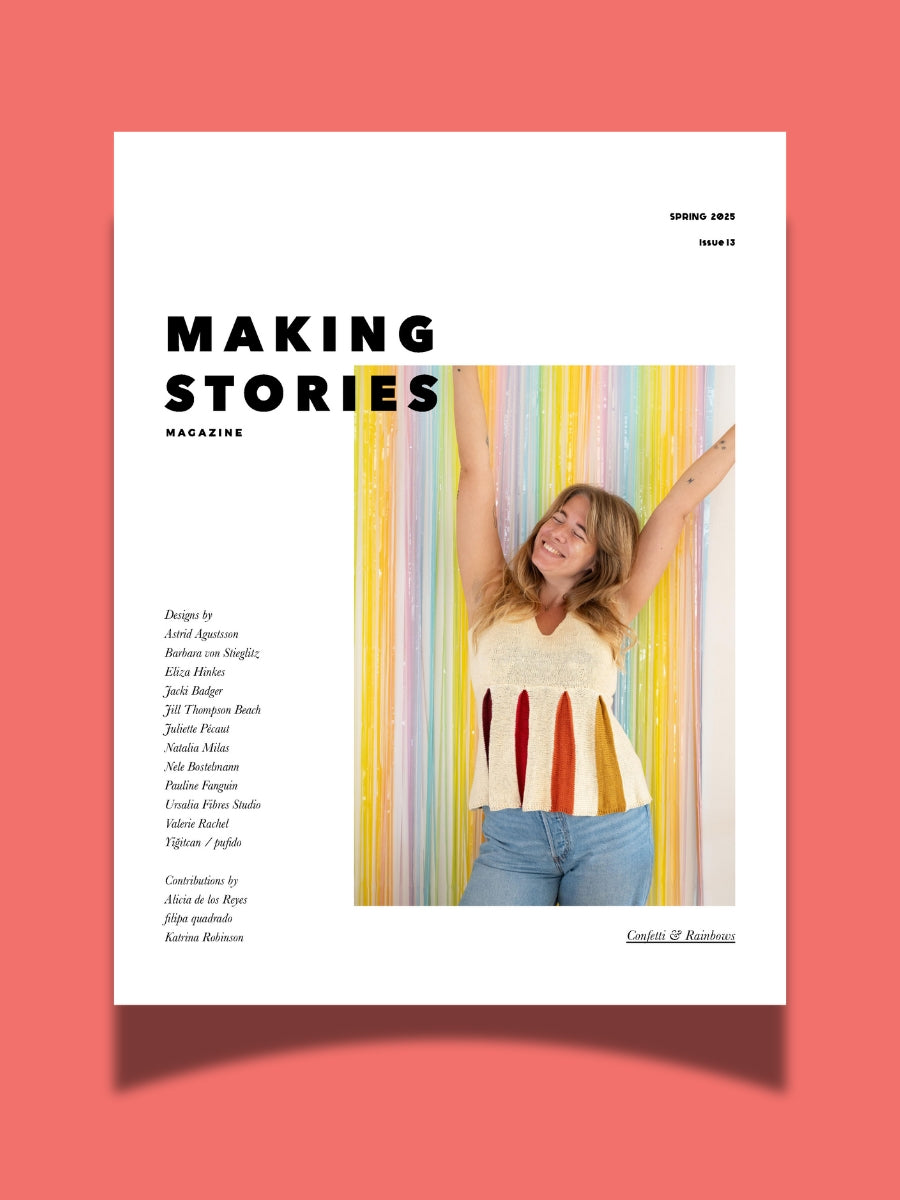
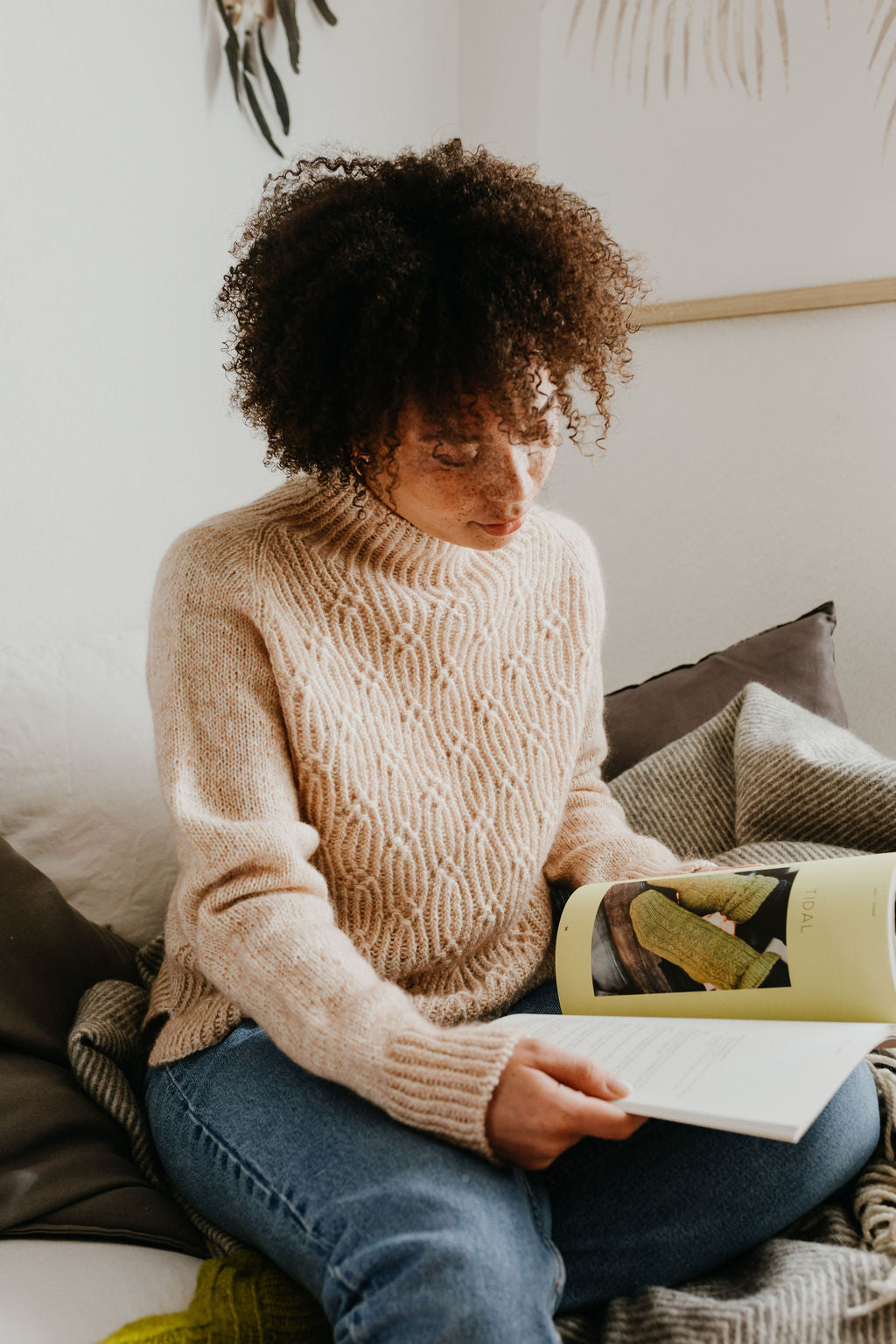
imke
January 16, 2025
so sad! but totally understandable. you did for sure more than your best! all the years!
and thank you for the summary of the knitting pattern situation. I , as a designer, struggeling a lot lately… your words can help me to think about the situation more clearly!
imke